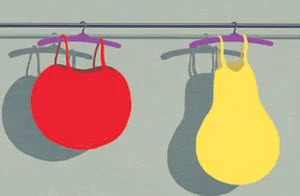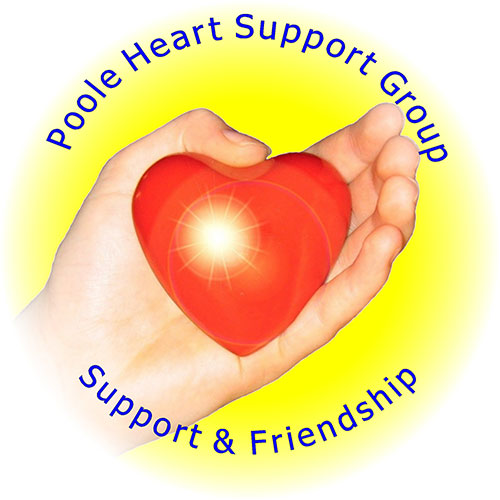
5 risk factors for heart and circulatory disease – How to control them

You can do plenty to reduce your chances of heart attack or stroke, whether you have coronary heart disease or been told you’re at risk. Sarah Brealey and Senior Cardiac Nurse Christopher Allen from the BHF explain.
We’re used to seeing headlines about what will or won’t increase your risk of cardiovascular disease (CVD). Some headlines can’t be trusted, but we do know that with lifestyle changes and medication you can help reduce your risk of a heart event – even if you’ve had one already. We’ve funded research for more than 50 years and our discoveries have helped develop medications, treatments, health programmes, and more to combat your risk of heart disease.
Already had a heart attack or stroke? You probably know that your risk of having another is increased. But there’s lots you can do to reduce your risk, including taking medications and using the tips outlined here.
1. High cholesterol
What is high cholesterol?
Cholesterol is a fatty substance found in the blood. Too much ‘bad’ cholesterol can increase your risk of developing CVD. It can cause atheroma to build up inside artery walls, preventing enough blood from reaching the heart or other parts of the body. If a piece of atheroma breaks off, a blood clot can form, blocking the blood supply to the heart (a heart attack) or the brain (a stroke).
Cholesterol is measured by looking at your HDL (good) cholesterol and your non-HDL (bad) cholesterol. Non-HDL cholesterol should be lower than 4mmol/L (millimoles per litre of blood), and your total cholesterol should be no higher than 5 mmol/L.
- Read more about cholesterol measurements.
How would I know I have high cholesterol?
You may not be able to tell that you have high cholesterol. That’s why it’s a really good idea to have an NHS Health Check (available in England only, or a Keep Well health check in Scotland) if you’re over 40. If you’ve already been diagnosed with CVD, your cholesterol levels should be checked regularly anyway.
How can I reduce my cholesterol?
You can help to reduce your cholesterol by:
- reducing the saturated fat (butter, cheese, full-fat milk and meat) you eat
- replacing saturated fats with unsaturated fats such as olive, rapeseed or sunflower oil and oily fish and nuts
- Making lifestyle changes, including being physically active and eating well
- Taking a statin if your risk of a heart attack or stroke is more than one in 10 over the next 10 years. Statins help reduce your cholesterol level and, as BHF research has shown, reduce your risk of heart attack or stroke. If you already have cardiovascular disease, taking a statin will reduce your risk of further events, even if your cholesterol level is low.
2. Weight and waist size
What does being overweight mean?
Being overweight or obese increases your risk of CVD (and conditions including type 2 diabetes). Your body mass index (BMI) is a way to tell if you’re overweight or obese. Typically, a BMI of 25 or above means you may be overweight and a BMI of 30 or above is classified as obese.
Does my shape matter?
BMI is not the only measure of risk. Having too much weight around your middle raises the risk of CVD, high blood pressure, diabetes and stroke. Typically, your health is at ‘increased’ risk if you’re a man with a waist over 94cm (37in), or a woman with a waist over 80cm (31½in).
Does ethnic origin change my risk in relation to my weight or waist size?
Yes. People of some ethnic groups, including South Asian, African-Caribbean, black African, Chinese and Middle Eastern are at risk of developing health problems at a lower BMI than the white population.
People of South Asian and Chinese origin are advised to have a BMI below 23 to reduce their risk of developing type 2 diabetes. Men of South Asian, Chinese, black African and African- Caribbean origin are at ‘severe’ risk if their waist is over 90cm (35½in). For white European men, a waist size of 102cm (40in) means ‘severe’ risk.
Women of minority ethnic origin are at ‘severe’ risk with a waist over 80cm (31½in). A waist over 88cm (35in) puts white European women at ‘severe’ risk.
- Check your BMI.
How do we know how weight or waist size affects risk?
Several population cohort studies (which follow large groups of people over time) funded by the BHF have helped us understand how weight and body shape affect disease risk. The BHF Centre on Population Approaches for Non-Communicable Disease Prevention specialises in research to prevent diseases such as coronary heart disease (CHD). Researchers are looking at the effects of obesity and physical inactivity, and how to reduce their impact.
What can I do to reduce the risk?
If you are overweight or have a waist size that puts you at risk, losing weight will help. Make small, long-term changes, such as reducing portion sizes and being more physically active.
- Trying to keep an eye on your weight? Get expert advice on how to achieve weight loss that lasts.
3. Type 2 diabetes
What is diabetes?
More than three million people in the UK have been diagnosed with diabetes, but an estimated 600,000 people may have it without realising. Diabetes is a condition where the amount of glucose in your blood is too high. It puts you at much higher risk of CVD, partly because high glucose levels can lead to blood vessel damage.
How do we know diabetes increases the risk of CVD?
We are helping to fund several research projects that could lead to new treatments for type 2 diabetes. At the University of Leeds, BHF Professor Mark Kearney is helping us to understand links between diabetes and CVD. His team is trying to develop a new treatment for people with diabetes, aimed at repairing damaged blood vessels. Another programme is finding ways to prevent effects of diabetes in people who have CHD.
What can I do about my diabetes?
If you have diabetes, it’s very important to control your blood glucose, blood pressure and cholesterol. Eating a healthy diet, being active and controlling your weight all help manage these things and reduce your risk of developing CVD.
Type 2 diabetes is linked to the amount of fat in your body, so if you lose enough weight, you may stop experiencing symptoms, although they can return, especially if you regain weight.
- Read more about diabetes medications.
4. High blood pressure
What is high blood pressure?
Blood pressure is the force exerted by blood against your artery walls as it circulates around the body. High blood pressure (hypertension) means your blood pressure is equal to or higher than the recommended level (140/90mmHg). It affects nearly 30 per cent of adults in the UK. Your risk increases as you get older.
How would I know I have high blood pressure?
High blood pressure is not usually something you can notice, but it can damage the arteries, which can increase your risk of heart attack and stroke. Over time, if it is not treated, the heart may become abnormally large and its pumping action will be less effective, which could lead to heart failure.
If you’ve been diagnosed with CVD, then you should have your blood pressure checked regularly, or as part of an NHS Health Check (England) or Keep Well health check (Scotland).
How can I reduce my blood pressure?
If you have been diagnosed with high blood pressure it’s important to
- keep to a healthy weight
- cut down on salt and alcohol
- stay physically active
- take any prescribed medication.
- Watch our short film on how to measure blood pressure at home.
- Get our 6 top tips for how to reduce your blood pressure.
5. Smoking
If you are a smoker, giving up is the single biggest thing you can do to help your heart. Smokers are almost twice as likely to have a heart attack compared with those who have never smoked.
Chemicals in cigarette smoke damage arteries, force your heart to work harder and make blood more likely to clot (raising heart attack or stroke risk). The risk to your health starts to drop soon after you give up, so it’s never too late.
- Follow our simple guide to quit smoking.
- See 10 weird things that could cause heart disease.
- Read our feature about atherosclerosis.
Subscribe to News
Enter your email address to receive notifications of new posts by email.
- Sleep and Heart DiseaseMeasuring your waist can help reduce your risk of heart and circulatory diseases, as Professor Naveed Sattar tells Senior Cardiac Nurse Emily McGrath.
- What your resting heart rate says about youMeasuring your waist can help reduce your risk of heart and circulatory diseases, as Professor Naveed Sattar tells Senior Cardiac Nurse Emily McGrath.
- 5 risk factors for heart and circulatory disease – How to control themMeasuring your waist can help reduce your risk of heart and circulatory diseases, as Professor Naveed Sattar tells Senior Cardiac Nurse Emily McGrath.
- Measuring your waistMeasuring your waist can help reduce your risk of heart and circulatory diseases, as Professor Naveed Sattar tells Senior Cardiac Nurse Emily McGrath.
